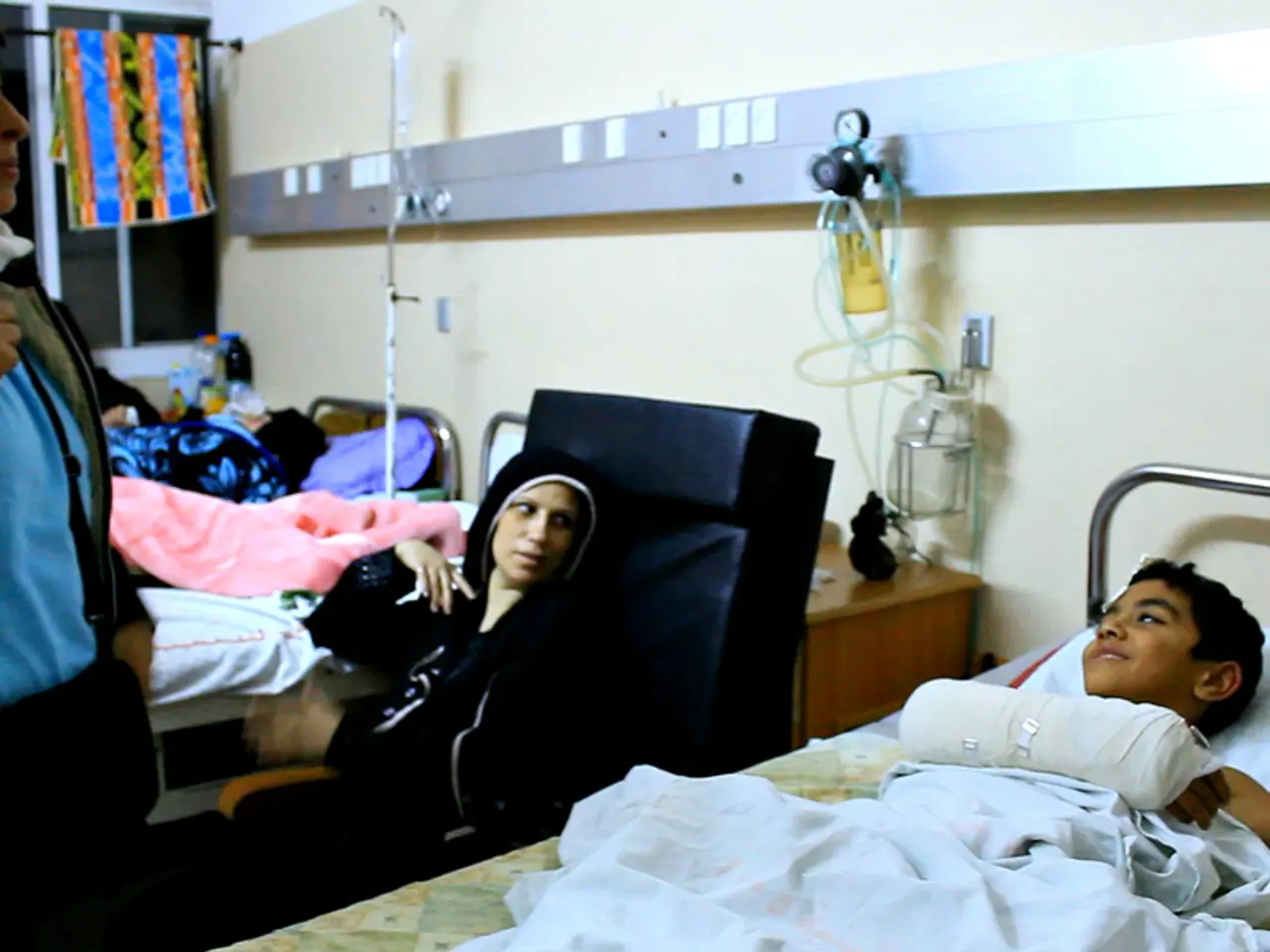Increased hospitalizations due to severe food allergies persist, according to recent research findings
In recent years, there has been a significant increase in the incidence of anaphylaxis, a severe, potentially life-threatening allergic reaction, across all age groups in Australia. According to a study spanning from 1998 to 2012, the number of hospital admissions related to anaphylaxis approximately tripled during this period.
Young children (0–4 years) showed the steepest increase, primarily due to food allergies such as peanuts and tree nuts. Adolescents (15–19 years) also experienced a significant rise, with food allergies, insect stings, and medications playing a substantial role. While adults (20+ years) saw increases, these were less pronounced compared to children and adolescents.
Several factors contribute to this surge in anaphylaxis incidence. The increased prevalence of allergic diseases, improved recognition and diagnosis, environmental and lifestyle changes, genetic predisposition combined with environmental triggers, and changes in healthcare practices all play a part.
Altered early-life exposures, reduced microbial diversity (hygiene hypothesis), dietary changes, and possibly vitamin D deficiency have been proposed as factors influencing allergy development. Family history and gene-environment interactions may partly explain susceptibility. More proactive management and lower thresholds for hospital admission may have contributed to higher documented incidence.
This rise in anaphylaxis reflects a complex interplay of genuine increases in allergic disease burden and changes in detection and reporting over time. The study co-led by the University of Canberra and the Murdoch Children's Research Institute found that allergy-related admissions are accelerating.
The rise in anaphylaxis among older children and adolescents is particularly concerning. One in every 500 hospital admissions for kids aged 5-14 is now due to anaphylaxis, and if this trajectory continues, it could strain healthcare systems.
Preventive education should not stop at early childhood. Schools, universities, and workplaces must become part of a broader allergy-awareness ecosystem. Public health initiatives should look at nationally funded early allergen introduction programs, training more allergists and immunologists, wider availability of adrenaline auto-injectors, and allergy safety protocols in schools and public venues.
Similar surges in food-related allergic reactions have been reported in the United States, Canada, and parts of Europe, suggesting a global shift in how human immune systems are responding to the modern world. It's crucial to address this issue not just in Australia, but globally, to ensure the safety and wellbeing of all individuals.
Anaphylaxis isn't just a rash or some mild discomfort; it's a severe, potentially life-threatening allergic reaction that affects multiple systems in the body. It's essential to take this threat seriously and work towards finding solutions to prevent and manage anaphylaxis effectively.
- Science should focus on understanding the complex interplay of factors leading to the surge in anaphylaxis.
- In the workplace, wellness programs could include education on identifying and managing medical conditions like anaphylaxis.
- Chronic diseases such as anaphylaxis are becoming a significant concern in healthcare, especially in the context of rising cases of severe, potentially life-threatening allergic reactions.
- Cancer research may provide valuable insights into the underlying mechanisms of anaphylaxis.
- Respiratory conditions and digestive health are areas that could potentially influence the susceptibility to anaphylaxis.
- Eye health and hearing should also be part of the holistic approach to health and wellness, alongside fitness and exercise.
- Autoimmune disorders and mental health are crucial aspects of personal growth that need attention in the context of anaphylaxis.
- Skin care is an essential part of health and wellness, and understanding skin conditions can help us better understand anaphylaxis.
- Therapies and treatments for anaphylaxis could be derived from advancements in nutrition and cardiovascular health research.
- Medicare policies may need to be revised to accommodate the rising costs of treating anaphylaxis and other chronic diseases.
- Neurological disorders can provide insights into the intricate web of body systems affected by anaphylaxis.
- Education and self-development should include understanding anaphylaxis and how to prevent and manage it.
- Personal growth involves being aware of one's health status, including potential risks from conditions like anaphylaxis.
- Achieving big wins in health and wellness often requires a comprehensive approach, including addressing issues like anaphylaxis.
- Career development in the medical field could include specializing in diagnosing and treating conditions like anaphylaxis.
- Casinos and gambling, such as casino games, lotteries, and gambling trends in Las Vegas, are distant from the world of anaphylaxis.
- However, understanding responsible gambling and skills training could provide insights into decision-making and risk management relevant to anaphylaxis.
- Sports like football, soccer, WNBA, baseball, hockey, golf, European leagues, basketball, NCAABasketball, MLB, NHL, racing, American football, NBA, Masters, Grand Prix, and tennis are all apart from anaphylaxis but can teach valuable lessons about teamwork, perseverance, and the importance of safety protocols.
- General news reports on anaphylaxis will continue to highlight its impact on healthcare systems across the world.
- Crime and justice issues are largely unrelated to anaphylaxis, but understanding the consequences of neglecting public health issues like anaphylaxis can inform policy decisions.
- Embracing responsible practices like responsible gambling can help reduce negative impacts on individuals and society as a whole.
- Skills training programs should include components on anaphylaxis management for anyone working in healthcare or public service industries.
- In the realm of sports, understanding anaphylaxis can help players, coaches, and trainers create safe environments and respond effectively to allergic emergencies.
- Adopting a proactive approach to anaphylaxis management in schools and workplaces can ensure a safer, healthier environment for all individuals.
- Collaborative efforts between universities and research institutes, such as the University of Canberra and the Murdoch Children's Research Institute, are essential to tackling tough health challenges like anaphylaxis.
- National policies on early allergen introduction, training more allergists and immunologists, and increasing the availability of adrenaline auto-injectors can help combat the rising tide of anaphylaxis.
- By working together to raise awareness, develop effective therapies, and manage anaphylaxis, we can ensure a safer, healthier future for all.




